ALWAYS know WHERE your bird is!
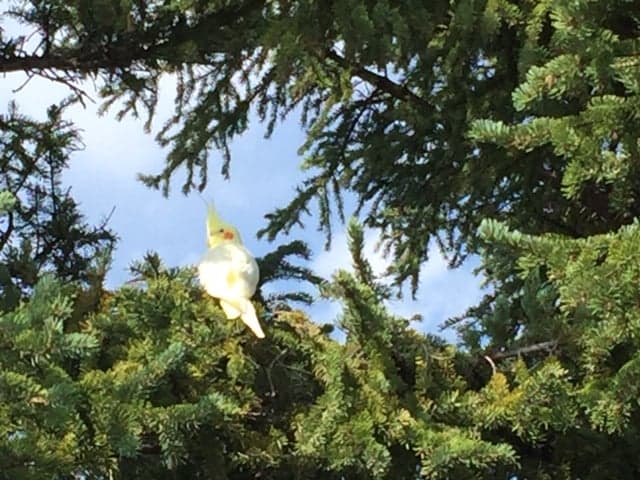
During the spring and summer we get dozens of calls for help in regards to lost birds. Although its mostly the warmer months when birds get lost, it can happen at anytime of the year and is crucial that you are always aware of where your bird is when its not in his/her cage.
A CLIPPED BIRD CAN STILL GET LOST
Active households with doors opening/closing alot should be cautious at all times. A flying bird will try to follow you out the door and could potentially fly out or get slammed in the door – a tragic outcome.
Many people believe that their bird is so bonded to them, that they would never ever try to fly away – and yet those same people are often times the ones who are reaching out because their companion flew away.
Get a sign and put it on your outside door – lock the door when the bird is out – have people knock so you can put your bird away safely. If you do not have a lock, get a latch/hook – very inexpensive and works well for both wood or metal.

You can purchase a tension rod and hang a curtain on this to block off the doors where exits may happen.
If you are using a harness, ensure that it is the correct size for your species of bird. To big and they can escape it, to small and it will not fit properly.
Leg harnesses – please do NOT use these. Parrots leg muscles and bones are not strong enough to withstand the pressure of a sudden pull. Imagine this attached to your birds leg – and it gets spooked and tries to bolt, or falls. That pressure is instant and you risk your bird having a dislocated hip/foot or breaks.
Cages outside must have extra locks on doors/openings – don’t take a chance that “my bird would never be able to get out”. We have had many here that did find a way out.
Zipties work great as an added measure of security to keep doors closed on cages.

Check your screens and fix any that have any damage, keep your cages away from them – birds can chew through these in seconds.

IF YOU LOSE your parrot, immediately go out after him, if he’s flying high and fast away from you, try to see which direction he is going, sometimes they circle back to you but most times they are now scared and can fly for quite a distant before landing. If they are a proficient flyer, they will most likely end up in a tall tree, if they are not, they may look for somewhere lower to land – bushes/shrubs etc and at times will keep their home in sight from the treetops – if there is a high wind, the chances are likely that the bird could potentially be carried off for miles.
If you have a spare cage or their current cage is accessible to the outdoors, place it outside – ideally ontop of a picnic table/table in the middle of the yard, some place where the bird can see it. If you lose visual on the bird, its time to act. Round up as many people as you can, if you have a dog, take it with you and walk the neighborhood, keep your eyes up at the tall trees, and look in the bushes, if your dog is familiar with the bird, watch the dog, they could lead you right to the bird.
Look in bird feeders as you are walking – birds often go to these and look for any other dogs who are acting up ie: barking/jumping – your bird may be close by.
Take a towel/pillow case and a carrier with you, your bird will be scared/nervous and may be hard to handle, trying to hold him securely so he does not get away from you could add more undue stress.
Call your local SPCA/Humane Society as your FIRST call, most found birds will end up at your local shelter! Than call your City animal bylaw services, the bird MAY end up there and than be transferred to the SPCA.
Call the vet clinics , many found birds also end up at clinics,(if you have a fax machine, use this to send out photos/info to every clinic you can) if your close to strip malls go have a look around and get posters up, go by playgrounds and any areas where there is alot of people.
Post an ad on the online venues and keep checking it hourly if possible, many people who find birds also post they have found them but do not necessarily LOOK for ads nor do they contact the SPCA if they have a found animal. If you have other Parrot rescues in the area, contact them. Get it up on your facebook and ask everyone to share it, it can reach hundreds of people in literally minutes!!
PLEASE BE AWARE OF WHERE YOUR BIRD IS AT ALL TIMES so that accidents don’t happen, just because your bird listens perfectly and has excellent recall does NOT mean that he/she is exempt from being lost. Birds with recall and free flight capabilities HAVE flown off and some have never been found. A bird will do what its meant to do and that is FLY, and when scared, that flight can take them for miles.
If people come and go in your home, as is quite common, start latching the door/s or putting up a curtain in the doorway (tension bars can be purchased at the dollar store)and closing it as you come/go from the room, birds won’t fly through the curtain.
IF YOU FIND A PARROT follow the exact protocols and contact the appropriate agencies/clinics – you can take any found bird to any vet clinic in the city, keep it away from any of your existing birds – if you put the bird in a cardboard box, ensure there are air holes cut in the top, do not leave the bird in the box for an extended period, but long enough to get it to the help it needs.
Although the bird may seem cute and loveable and you may have always wanted one, please DO NOT keep it, someone is most likely totally distraught at losing their friend and every effort should be made to help the bird finds it way back to its rightful owners.
An escaped bird is an accident and most accidents are preventable with due diligence – keep your feathered companions safe!!!

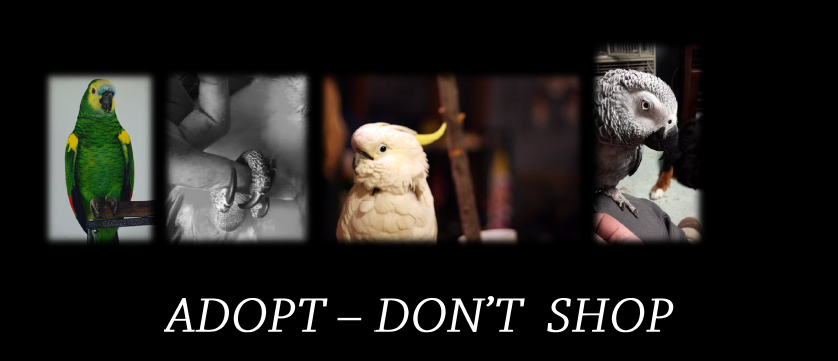
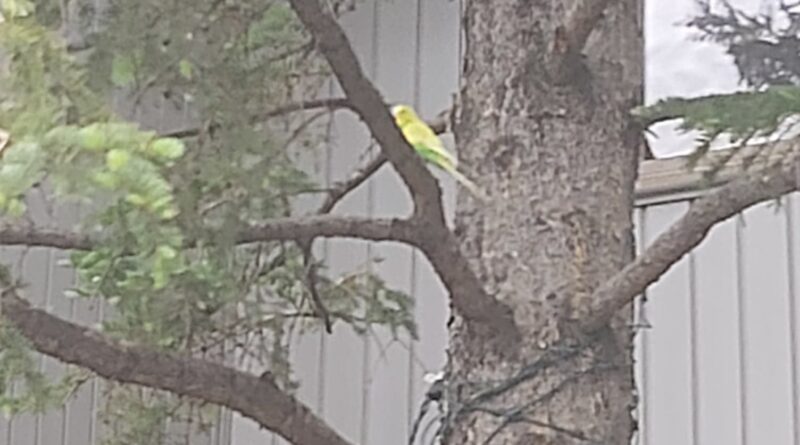

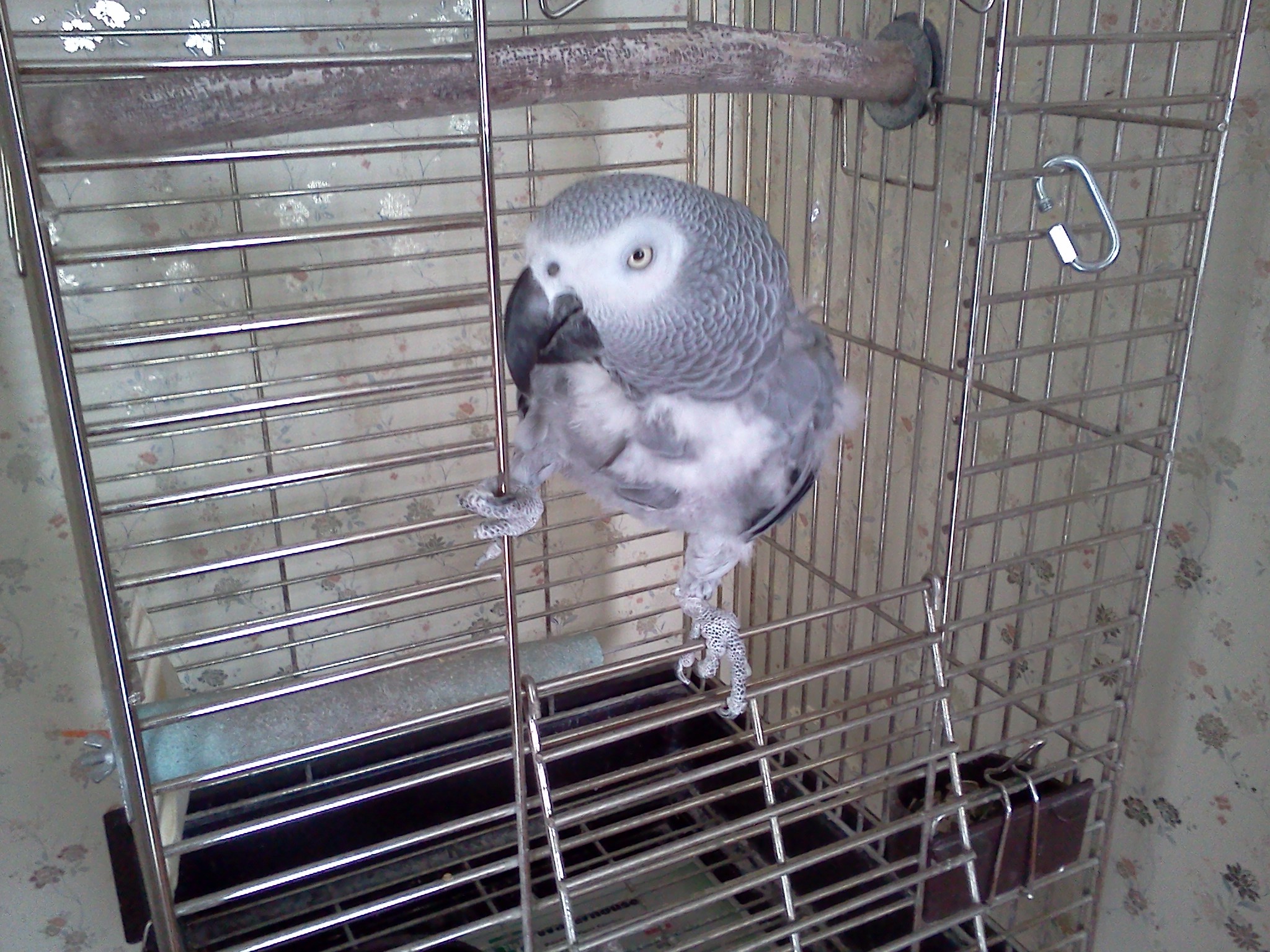
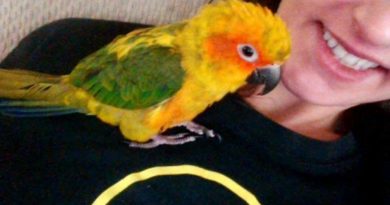
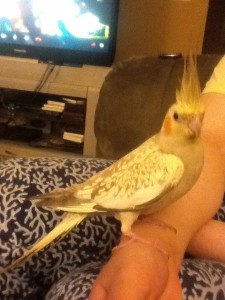
Dont forget to contact pet stores…when people find birds they want to purchase a cage to keep it…
That is so true Anna!
I wanted to add some more great information from the professional trainer Barbara Heidenreich. This is a great article with additional information regarding what to do when your bird escapes, and how to get them back:
http://www.goodbirdinc.com/help-escape.html
She has a DVD as well. It is a great resource.